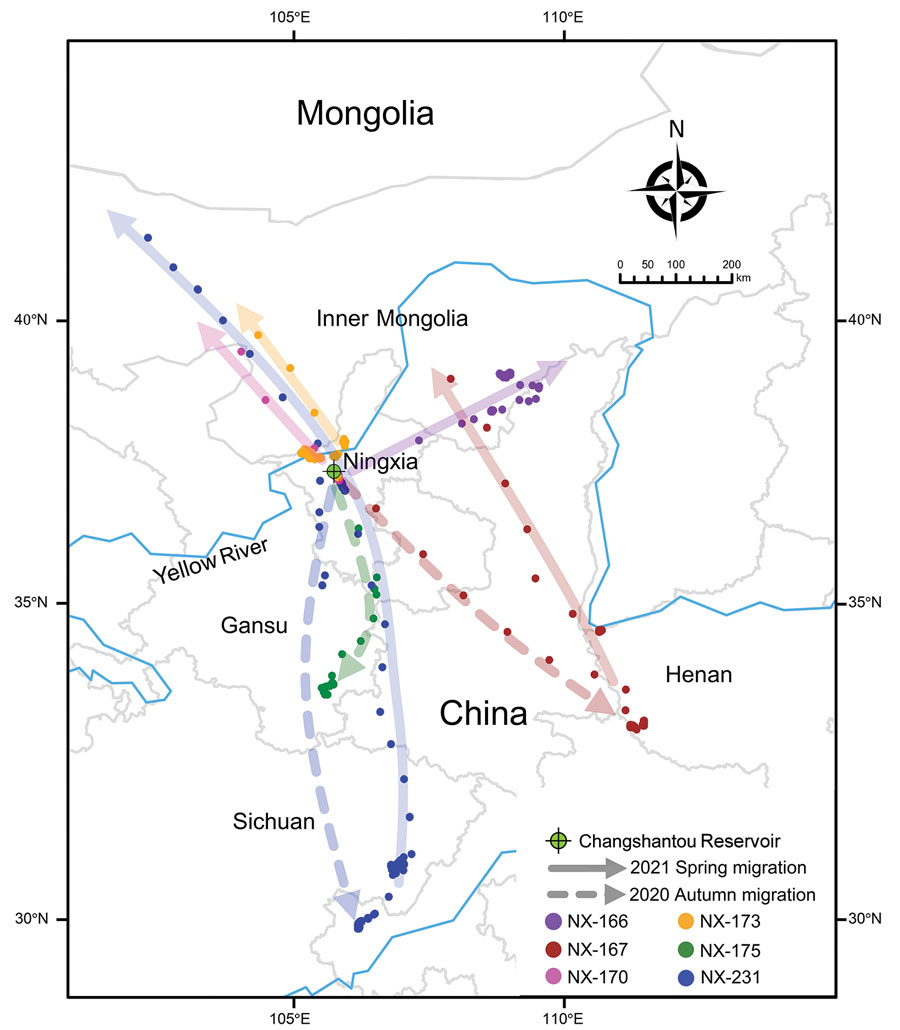Volume 28, Number 5—May 2022
Dispatch
Highly Pathogenic Avian Influenza A(H5N8) Clade 2.3.4.4b Viruses in Satellite-Tracked Wild Ducks, Ningxia, China, 2020
Figure

Figure. Migratory routes of 6 of 9 successfully satellite-tracked mallards infected with highly pathogenic avian influenza A(H5N8) clade 2.3.4.4b viruses, Ningxia, China, 2020. Mallards are indicated by different colors. The sampling site (Changshantou Reservoir) is indicated. Solid and dashed lines indicate spring migration in 2021 and autumn migration in 2020, respectively. Because the other 3 successfully satellite-tracked mallards (birds NX-169, NX-174, and NX-176) had been moving around the sampling point, their movements are not shown.
1These authors contributed equally to this article.
Page created: February 18, 2022
Page updated: April 19, 2022
Page reviewed: April 19, 2022
The conclusions, findings, and opinions expressed by authors contributing to this journal do not necessarily reflect the official position of the U.S. Department of Health and Human Services, the Public Health Service, the Centers for Disease Control and Prevention, or the authors' affiliated institutions. Use of trade names is for identification only and does not imply endorsement by any of the groups named above.